
Award-winning photographer talks film, world-record camera collection and developing a competitive edge at Sheridan
 by Jon Kuiperij – Aug 19, 2024
by Jon Kuiperij – Aug 19, 2024 Whether it's using cameras or collecting them, Honours Bachelor of Photography student Tanishq Arun is all about preserving history. "My favourite part of photography," says the 22-year-old, "is the ability to capture and communicate a moment."
Arun, who earned a photography diploma in his home country of India prior to entering Sheridan's four-year degree last fall, is the first official photographer of India’s national governing body of kickboxing and has already earned three honourable mentions from the prestigious International Photography Awards.
“My favourite part of photography is the ability to capture and communicate a moment.”
– Honours Bachelor of Photography student Tanishq Arun
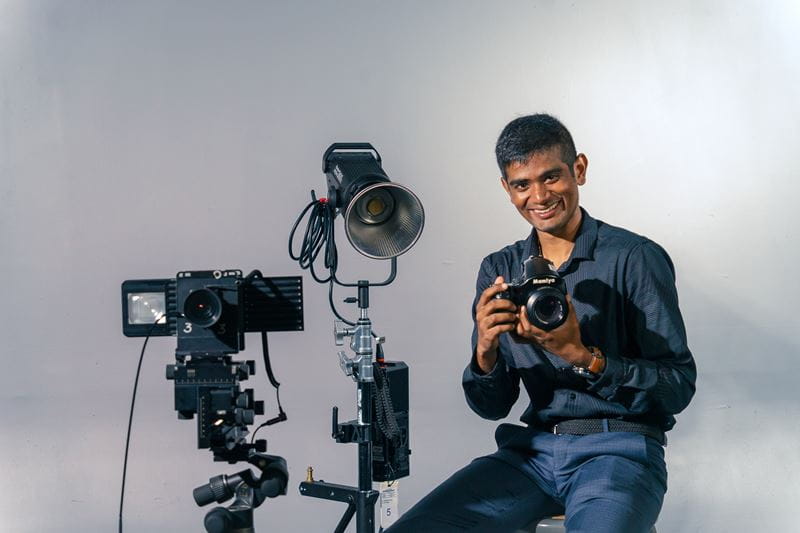
But his most impressive achievement in photography might be helping his father curate a collection of more than 4,000 vintage film cameras — setting a Guinness World Record for the largest collection of unique film cameras in the process. (They're also hot on the heels of the world record for the largest overall collection of film cameras, hoping to break the record early next year.) Cameras in the collection range from as large as 12 feet long to as small as a Canadian loonie, including models that were used to take the first photo on the surface of the moon, aerial images of World War II bombings and portraits of ancient kings.
"Digital cameras today are capable of capturing thousands of frames per second and have made creating photos so much easier," says Arun. "But we can't forget about film photography as a medium. As the industry continues to evolve, my father and I wanted to do something that preserves what led to this evolution."
We recently sat down with Arun to learn more about the world-record camera collection, how he chose to pursue a career in photography, why he enrolled in Sheridan's photography degree and more.
How did the camera collection start and how did you acquire so many cameras?
 Our collection started in 1997 with a broken-down Yashica twin lens camera, which was the first camera that my dad ever had and the camera that made him fall in love with photography. I was born a few years later and grew up around my dad's growing collection of vintage film cameras. That's how I first became interested in photography: seeing all of these unique cameras and learning how they worked.
Our collection started in 1997 with a broken-down Yashica twin lens camera, which was the first camera that my dad ever had and the camera that made him fall in love with photography. I was born a few years later and grew up around my dad's growing collection of vintage film cameras. That's how I first became interested in photography: seeing all of these unique cameras and learning how they worked.
A lot of our cameras are bought at auction houses. Sometimes we'll hear of people who are selling their cameras, and sometimes people donate cameras to us.
Where do you keep all the cameras?
When the collection started, the cameras were stored in a spare room in our house. But when that room started to fill up and the cameras kept coming in, we realized we needed to keep them somewhere else. That's when we decided to start a museum for cameras: Dr. Arun's Photography and Vintage Camera Museum located in Chennai, a state in the south of India.
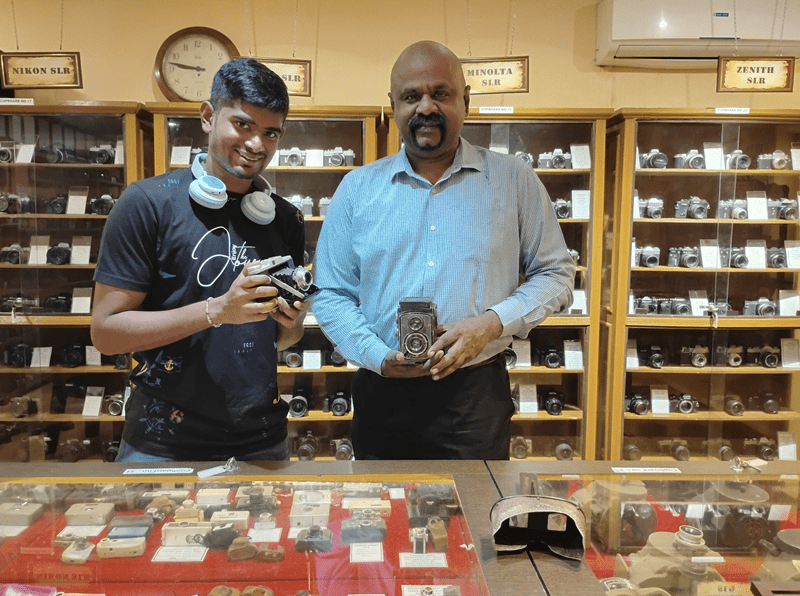
At what point did you and your father realize that your collection might qualify for a world record?
It was when we noticed that we had more than 1,250 unique film cameras. There was already a record for the most film cameras, but not for unique film cameras, so we applied for that record and got it.
Now our goal is to have the largest overall collection of film cameras in the world, and that's what we're working towards every single day.
What are some of the most rare or interesting cameras in your collection?
My personal favourites are the cameras that were used during the World Wars. These cameras were not made for consumer purposes, they were made for documenting the wars. One such camera is the Garflex Fairchild K20, the model that was mounted on a plane to get aerial shots of the bombing of Hiroshima and Nagasaki. We also have a lot of red Japanese vintage spy cameras. One of them looks like a pocket watch. Another one can actually be used as a lighter.
We also have a massive bellows camera, the Hunter Penrose 100, that was used to take photos of kings in the Mysore Maharaja Palace. It took a lot of people to load the camera on and off the truck when we transported it to the museum, and that made me realize how many people were needed to actually take an image back in the day.
One more camera I'll mention is the Hasseblad 500EL Data Camera, the model that was used by Neil Armstrong to take the first-ever photos on the surface of the moon. This camera is one of the most expensive cameras in the world and also one of the most unique. I'm very privileged to say that we have three Hasseblad cameras in our museum.
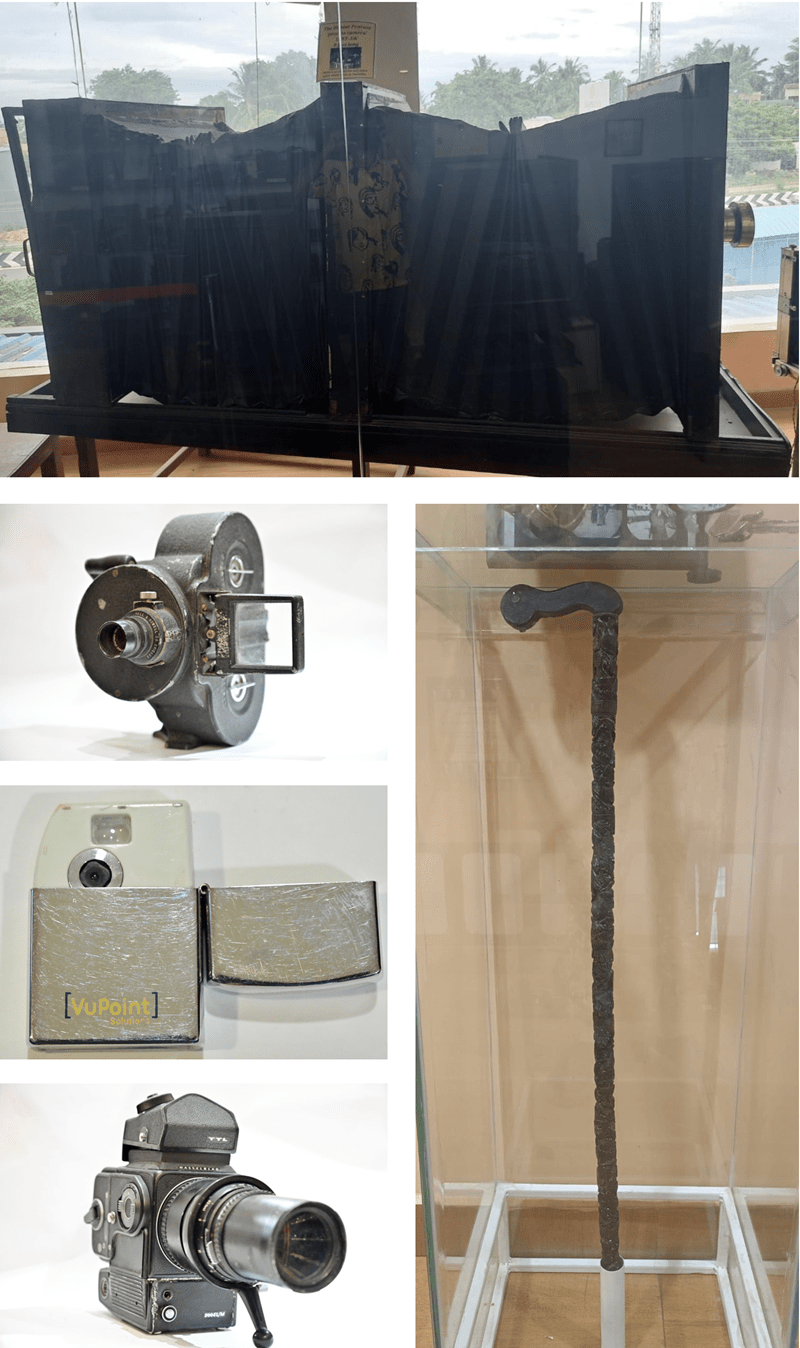
What made you decide to pursue a career in photography?
I grew up around cameras, but I didn't know I wanted to be a photographer. I actually wanted to be an animator, to create cartoons that moved on the screen. But when I began to study animation, I realized it's no joke. It requires a lot of artistic skill, a lot of drawing, and it got to a point where I couldn't keep up.
One day in our museum, I met a YouTuber who told me how photography was a career where you could make good money and also use it as a mode of self-expression. When I heard that, it was like a lightbulb going on in my head. I'd always thought photography was something people just do for fun, but now I know that this is what I want to do for my career.
How did you become the first official photographer for the WAKO India Kickboxing Federation? What other accomplishments in photography are you proud of?
I'm a former kickboxing athlete myself, starting at the age of 14. When I was at a competition in Russia, I noticed the quality of the images taken by the event photographers was outstanding. That made me want to bring that same quality to our sport in India, so I started taking pictures with my small DSLR at different competitions throughout my country. Those pictures were then used by WAKO India Kickboxing Federation on banners and promotional materials.
Last year, one of my kickboxing photos received an honourable mention in the non-professional category of the International Photography Awards (IPA) and was also a finalist in the World Sports Photography Awards. Another of my photos, a wildlife photograph showing two cows moving synchronously in the Western Ghats, also received an honourable mention in the IPA's non-professional category. And this year, I received an honourable mention in the IPA's One Shot Photography competition in the Searching for Peace, Everyday Tranquility category.
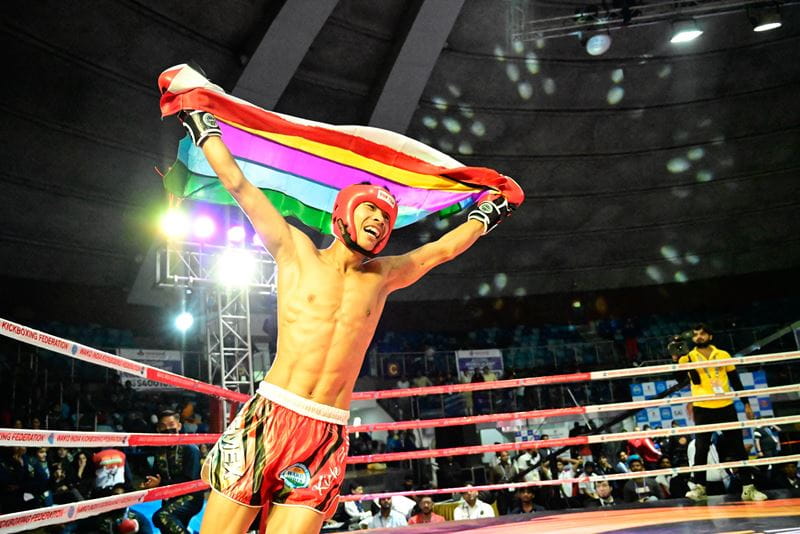
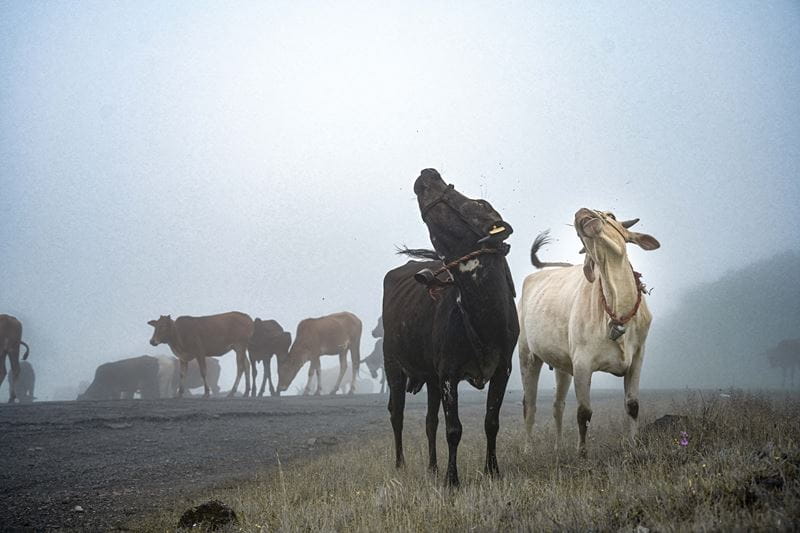
Why do you remain so passionate about film photography?
I remember when a little girl walked into our museum one day and asked where the memory card was in our 12-foot camera.
Back in the early days of photography, before flashes were invented, photographers had to burn magnesium ribbons to light up their scene. Then the first flashes were expensive because they involved small bulbs that would often explode due to a mix of potassium chloride and aluminum. The photographer might have as little as five seconds to get their shot, then pray and hope that they got the exposure right. Even today, rolls of film have 15-20 exposures that are costly to process.
When you know the number of shots you can take is limited, you want to make them the absolute best that you can. Using film cameras taught me to think before I shot, to come up with different compositions, rather than just blindly click like a hobbyist might.
You earned your photography diploma in India and were already shooting professionally. What made you decide to come to Canada and study photography at Sheridan?
The only barrier to entry in photography is a good camera that can take well-exposed images. So if that's your competition, how do you stand out? By understanding the art of photography — things like colour theory, design theory, how visual elements are arranged, the rate and dimension and depth.
“Building this massive foundation at Sheridan can help you achieve a lot in the industry. It gives you a competitive edge.”
– Honours Bachelor of Photography student Tanishq Arun
There are a lot of really talented photographers in India. But when I looked at the portfolio work of Sheridan students, I saw something that was different from what I was seeing in industry. I couldn't put my finger on it, but now I can. It's the art of photography.
The professors here push you. In just one year, I've learned so much about the artistic approach. It's extremely beneficial for all photographers to build this strong foundation of knowledge and ability. Anyone can get a camera and take pictures, but building this massive foundation at Sheridan can help you achieve a lot in the industry. It gives you a competitive edge.
Learn more about Sheridan's Honours Bachelor of Photography degree
— Portrait of Tanishq Arun by Marianne Sy-Lucero, Sheridan Digital Communications Officer. All other photos submitted by Tanishq Arun.
Media Contact
For media inquiries, contact Sheridan’s Communications and Public Relations team.
